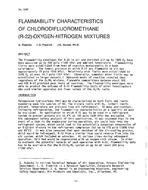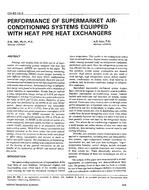The design of smoke control systems for ‘Areas of Refuge’ is becoming of increasing importance to architects, engineers and disaster management planners. However, accurate prediction of smoke flow through tall buildings and the design of compensatory air flow systems for its control requires the use of wind flow models. Such models are useful only if the input meteorological data, wind speed in particular, is also accurate. To date, such data have either been in the form of an average wind speeds adjusted for elevation or extreme wind speeds used for structural design. It has been recognized for some time these data were inappropriate for the design of smoke control systems and that an additional data set was needed for this specialised requirement.
It was the recommendation of ASHRAE Technical Committees 5.6 Fire and Smoke Control and 4.2 Weather Data that such a data set should consist of those values for which the observed wind speed at each station was less than or equal to the design value for 95%, 97.5% and 99% of the year. In other words, the observed wind speed would exceed the design wind speed for approximately 438, 219 and 88 hours per annum respectively.
The research reported here consists of the analysis of wind data from 239 stations in the United States and its territories for the period 1961 to 1990, and 146 stations in Canada for the period 1953 to 1989. These hourly wind speeds were extracted from CD-ROMs supplied by the National Climatic Data Centre in the United States and the Atmospheric Environment Service in Canada. The data were thoroughly checked for missing observations, internal consistency, uniformity of location and measurement height before final processing to extract the design wind speeds. Stations and data years which failed to meet strict criteria were eliminated from the analysis. Zephyr North
Product Details
- Published:
- 1996
- Number of Pages:
- 117
- File Size:
- 1 file , 2.6 MB
- Product Code(s):
- D-RP-816


